Melon Guide: Culinary Tips and Nutrition Facts
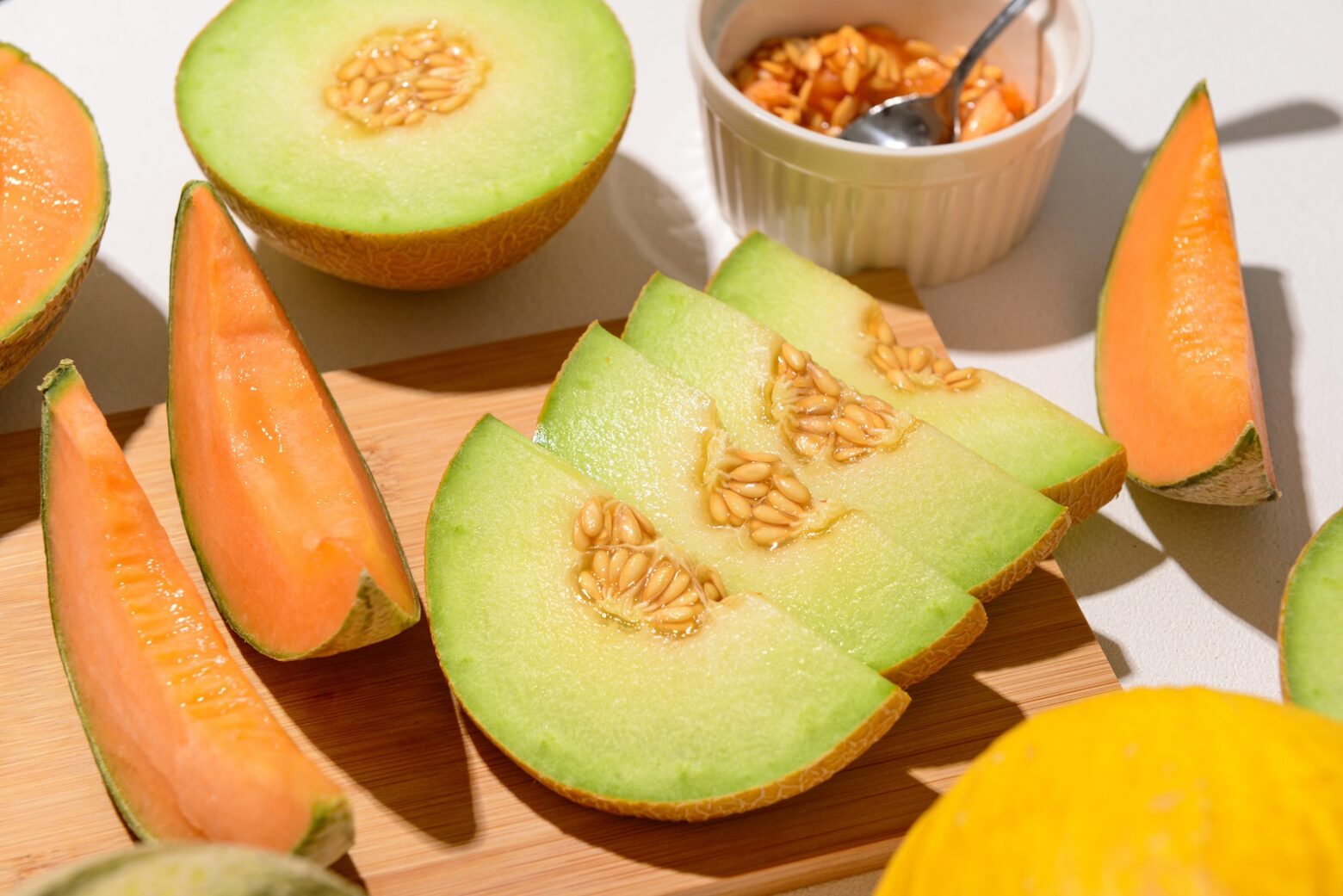
Whether you’re eating a slice of watermelon by the poolside or enjoying a bowl of honeydew for breakfast, melons make for a tasty, healthy snack.
Melons are part of the Cucurbitaceae family, which also includes cucumbers, squashes, and some gourds. [1] Almost all melons have high water content and similar health benefits. In this guide, we’ll explore the nutrition and health benefits of several melons, as well as tips on how to select and prep them.
Potassium and Melons
Most melons are loaded with potassium. [2] Interestingly, the UDSA has labeled potassium a nutrient of concern in the 2020–2025 dietary guidelines.[3] Nutrients of concern are named for being largely under-consumed by Americans, and the USDA encourages dietary changes to get the recommended allowance.
Similarly, one of the main focuses of The Paleo Diet® is balancing three key micronutrient ratios, including the ratio of sodium to potassium. Potassium is essential for the physiological processes of all cells in our body. [4] You can increase your potassium intake and balance your micronutrient ratios by eating your favorite melons.
How to Pick the Best Melon
You don’t want to go to the store and pick just any melon. There is a method to selecting the best, freshest melons.
- Rind: When selecting any fresh produce at the store, make sure the outer layer has no dents, bruises, holes, or cuts. If your melon rind has any blemishes, it could mean it’s been damaged and has been spoiled.
- Weight: Choose a heavier melon. The heavier it is, the juicier and sweeter it will taste due to its water content. However, if you are looking for a little less sweet melon, go for a medium-sized one.
- Stem: Melons grow on vines, and if the melon was harvested too early, there will still be a stem present. [5] To choose the ripest melon, look for one without a stem.
How to Prep Melons
When prepping any fresh produce, rinse with warm water and an all-natural produce cleaning agent like vinegar to ward off pesticides and bacteria.
Each melon’s rind will have a different texture, but most are tough. When cubing a melon, use one of your sharpest knives and cut the whole melon in half. Slowly work your way around each half of the melon, cutting off chunks of the rind until it’s all gone. This is typically the fastest and easiest way to get to the inside of the melon.
Once the rind is off, the rest is up to your preference! You now have a clean melon with the inside exposed and ready to be cooked, chopped, or eaten raw.
Watermelon
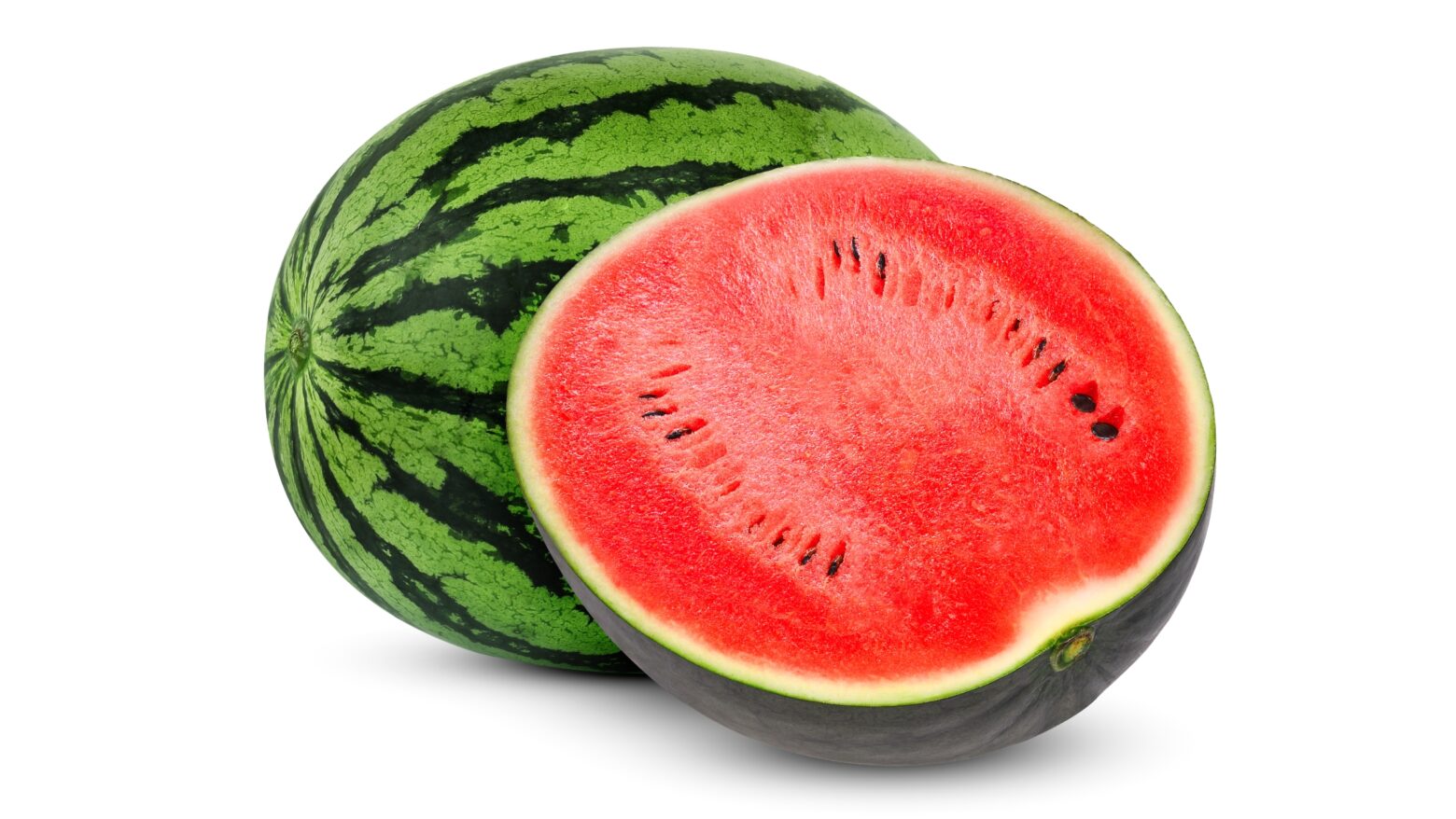
Watermelon originates from Africa, [2] but it is arguably the most well-known melon in the United States. It has one of the lowest calorie contents of all fruits because of its high water content. Despite being low in calories, it still manages to provide a sweet, juicy taste with every bite.
Watermelon Nutrition & Health Benefits
Watermelon provides a ton of unique health benefits. Like most melons, it is filled with electrolytes that help keep you hydrated. Brandy Winfree Root, RDN explains that watermelon contains the antioxidant lycopene, known to reduce inflammation in the body and linked to a decreased risk of prostate cancer in men.
Believe it or not, watermelon also has great oral health benefits. Jerald Friedman, DDS, says watermelon encourages saliva production, which is “critical for fighting periodontal diseases as it wards off bad bacteria.” Additionally, Dr. Friedman states that the fiber in watermelon helps clean plaque from teeth and the malic acid content aids in removing stains. Who knew watermelon could be the secret to clean and healthy teeth?
Watermelon Recipes
Watermelon is a great snack eaten plain. However, there are many recipes that make use of its juicy, hydrating texture. Watermelon sorbet is one popular summer treat to help stay cool in the sweltering heat. It also tastes great in a salad mixed with mint leaves or leafy greens.
Check out some of our Paleo-approved watermelon recipes:
Honeydew
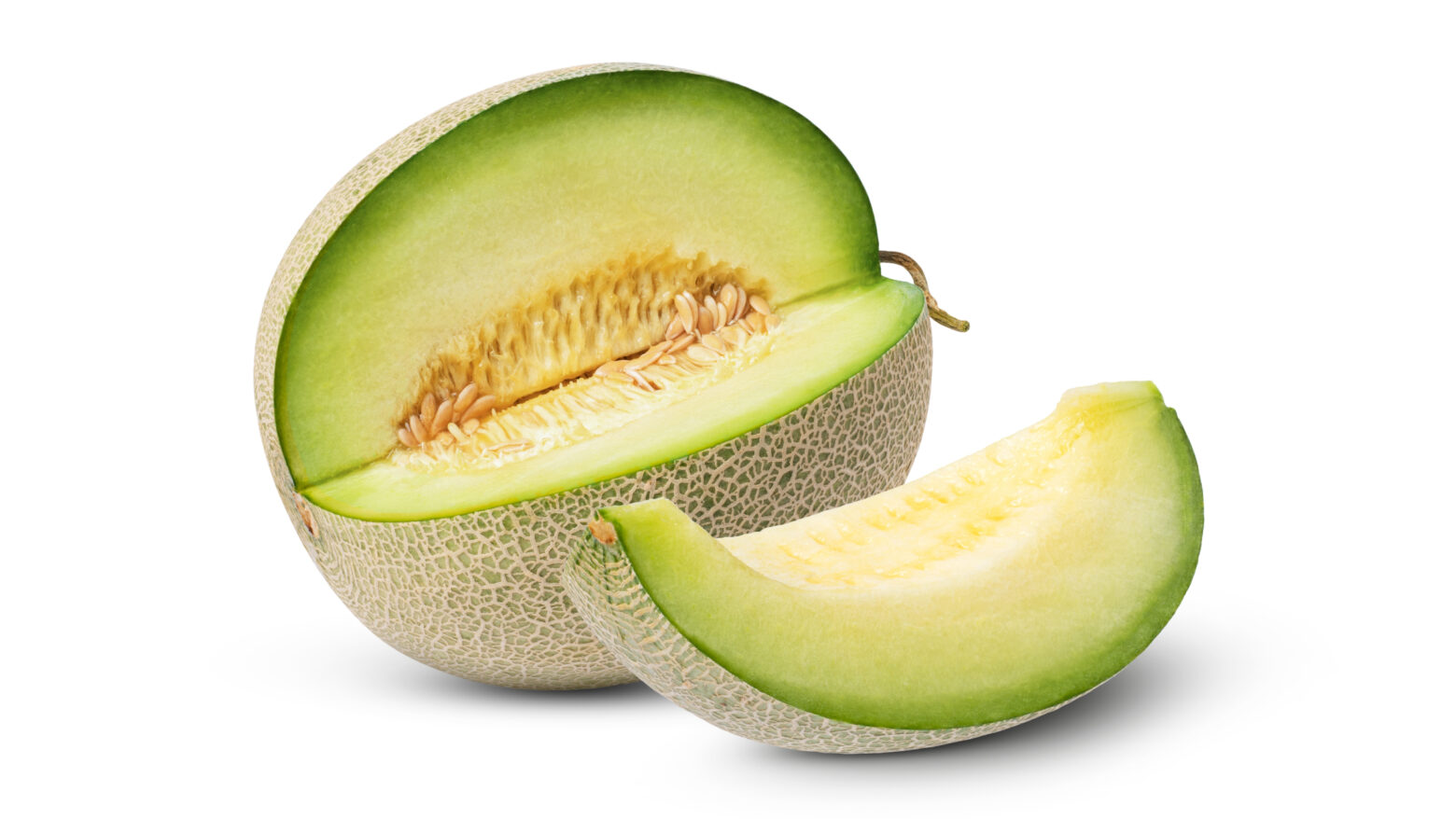
Honeydew originated in the Middle East, [2] and it got its name for a reason. When you bite into a honeydew melon, you get an immediate simple, but sweet flavor—very similar to honey itself.
Honeydew Nutrition & Health Benefits
Honeydew is filled with numerous nutrients and minerals, including vitamin C, which helps the body produce collagen. [6] This protein is essential for achieving firm, tight skin. Our bodies naturally produce collagen, but as we get older, our ability to make collagen decreases. This decline is due to the fibroblast cells in our bodies, which are responsible for collagen production and become less active as we age. [7]
While you can get firmer skin through products and procedures, there is a more natural, tasty way to receive tighter skin—by eating honeydew!
Honeydew Recipes
Its vibrant green color makes honeydew a picture-perfect fruit to use in recipes. Honeydew is commonly seen in mocktails or aguas frescas to naturally sweeten up a refreshing beverage. It also makes for a great popsicle or frozen treat.
Check out some of our Paleo-approved Honeydew recipes:
Cantaloupe
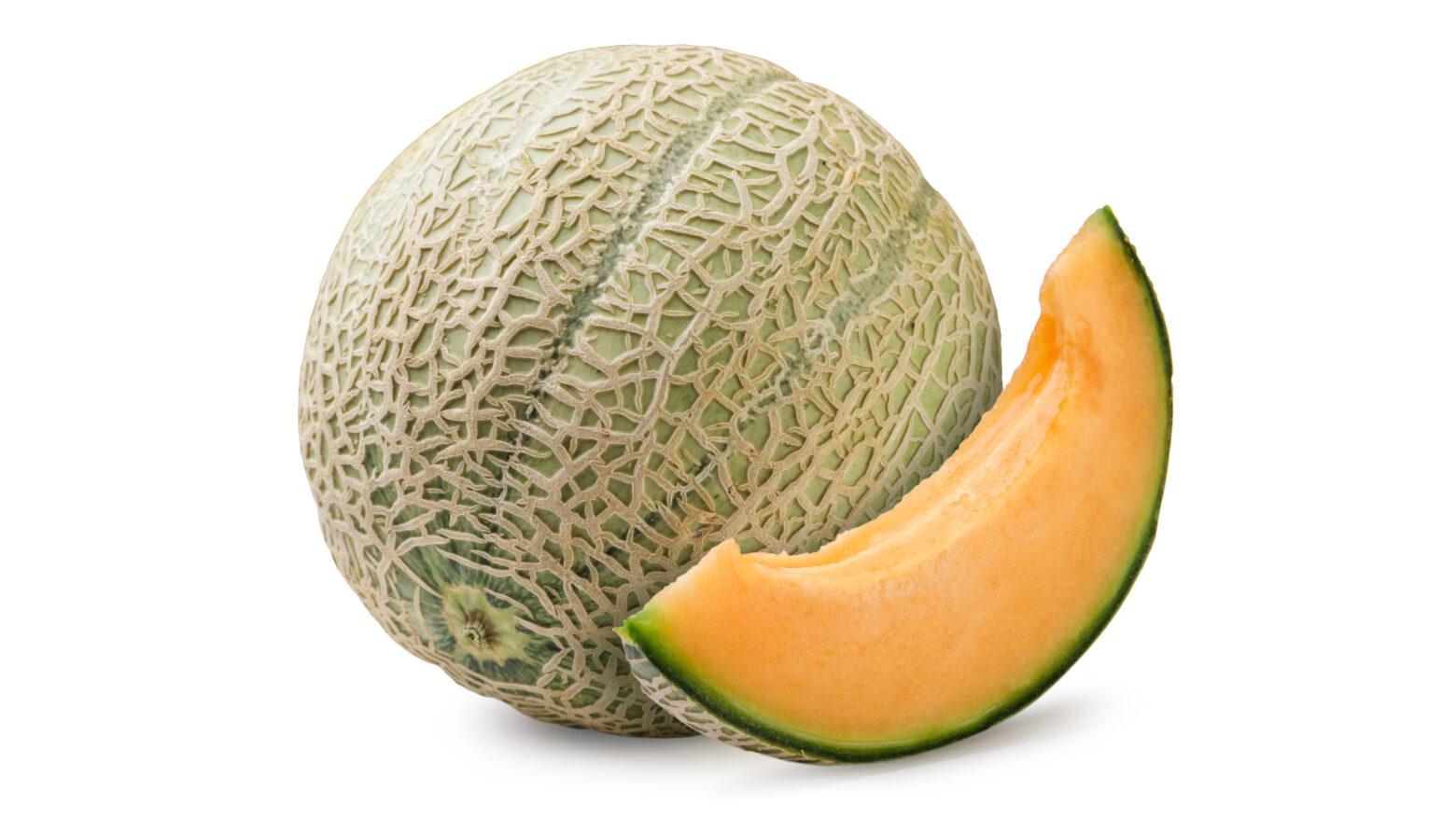
Like honeydew, cantaloupe also originated in the Middle East. [2] This melon is known for its bumpy, scale-like rind. While not as sweet as watermelon and honeydew, cantaloupe still has a mildly pleasant taste.
Cantaloupe Nutrition & Health Benefits
While cantaloupe might lack sweetness compared to other melons, it provides numerous health benefits instead. Winfree Root states that cantaloupe contains a large amount of beta-carotene, an antioxidant that also gives cantaloupe its orange color. Beta-carotene is converted into vitamin A, which helps boost immunity and has been shown to ward off asthma later in life. [8]
Like honeydew, cantaloupe also contains vitamin C, but in higher levels. You’ll also find in both melon types, and in similar concentrations, the antioxidants lutein and zeaxanthin, which support eye health and help slow age-related macular degeneration. [8]
Cantaloupe Recipes
Cantaloupe is often paired with savory ingredients in recipes. For example, one popular appetizer is cantaloupe wrapped in prosciutto. Unfortunately, cured meats are not Paleo, but you could use thin slices of pork belly to enjoy this flavorful dish in a healthier way.
Check out our Paleo-approved Cantaloupe recipe:
Bitter Melon: The Melon’s Cousin
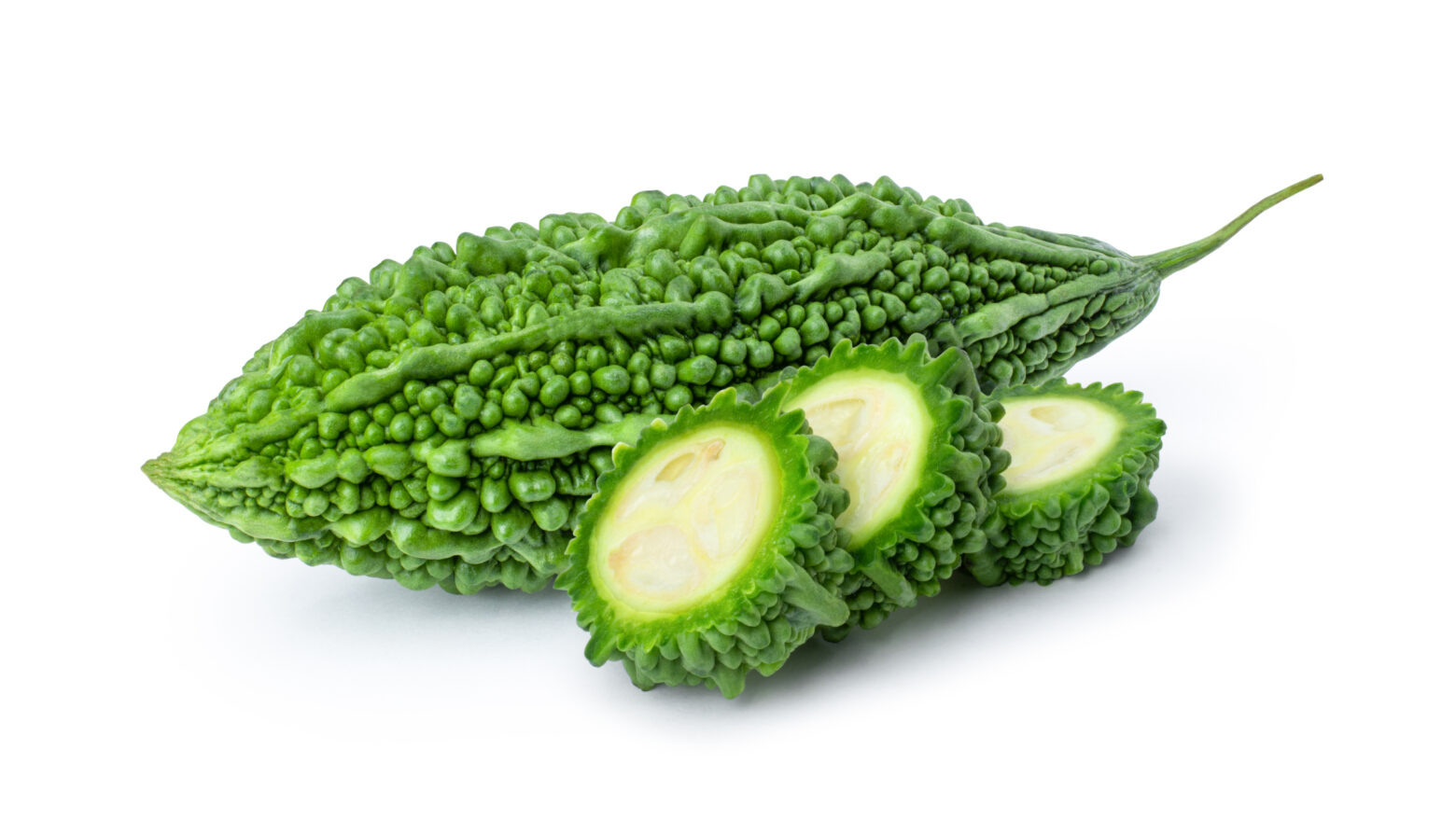
Bitter melon comes from India and other parts of Asia. [9] Unlike most melons, it doesn’t have a sweet taste, but rather a bitter one. It looks like a combination of cucumber and okra, bumpy and thin.
There has been some confusion as to whether bitter melon is actually a melon. Though not in the same genus as other common melons, it still belongs to the Cucurbitaceae family.
Bitter Melon Nutrition & Health Benefits
Bitter melon has a great track record when it comes to health benefits. It mimics the effects of insulin and can help regulate blood sugar levels, which is why it has been suggested for those struggling with obesity, type 2 diabetes, and cancer. [9] It has also been shown that bitter melon has excellent anti-inflammatory properties for the body. [9]
Bitter Melon Recipes
Due to the bitter flavor of bitter melon, it’s used in more savory dishes. When preparing a bitter melon, Winfree Root suggests taking off the peel, and soaking it in water, before cooking with it to take away some of its bitterness. She also recommends adding it to your stir-fry recipes.
Swap out broccoli for bitter melon in some of our Paleo-approved recipes:
Picasso Melon
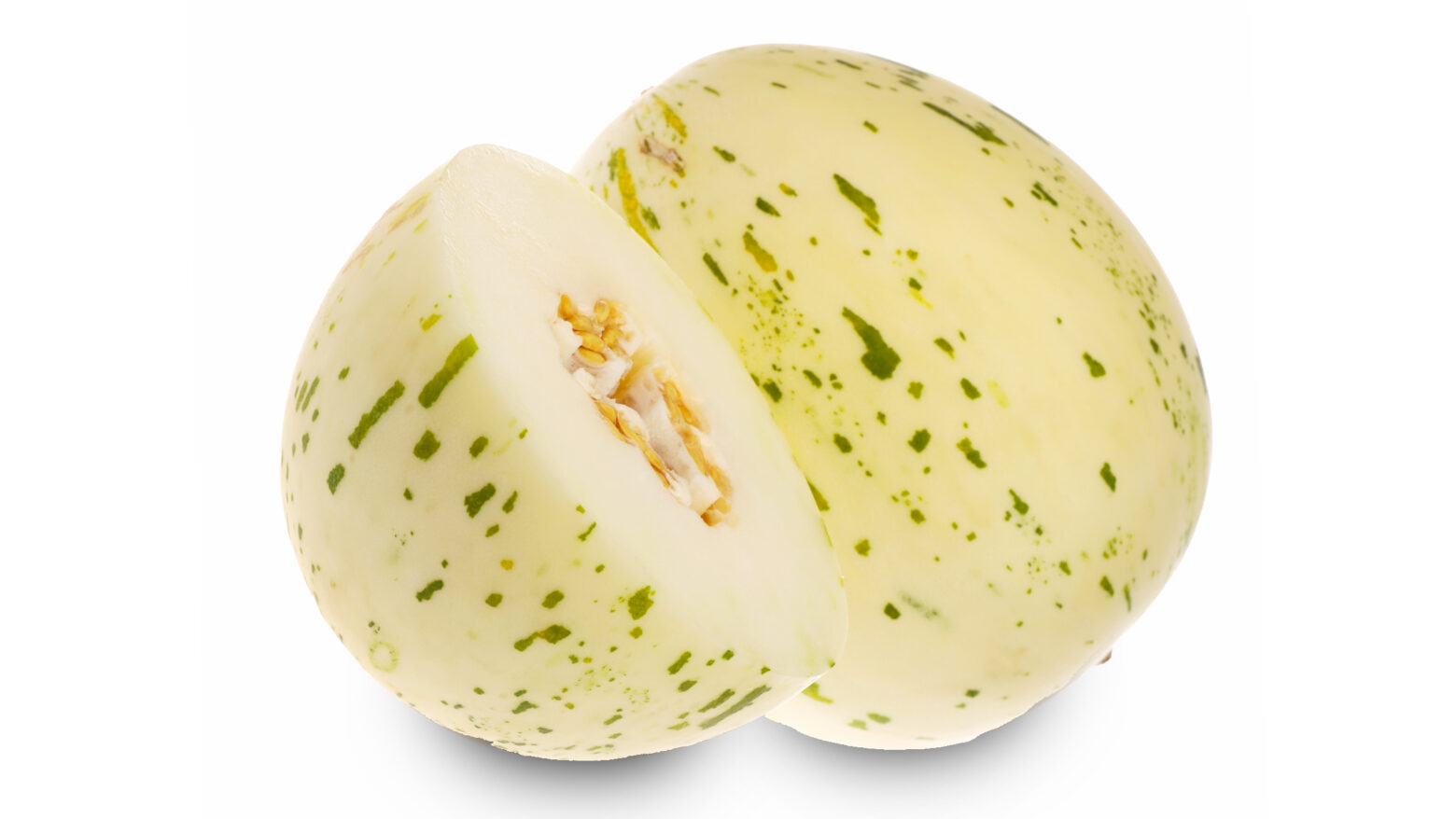
You might have recently started seeing Picasso melons in stores. The relatively new hybrid melon has been gaining popularity since making its debut in 2021. [10]
The melons are yellow-white on the outside with mottled green stripes and have white flesh. Because Picasso melon is a relatively new fruit, there is not much known yet about its nutritional content.
Picasso Melon Recipes
Picasso melons are sweet with a texture similar to cantaloupe or honeydew. They would make great replacements to either melon in recipes, or as an addition to summery fruit salads and smoothies.
Add Picasso melon to these Paleo-approved recipes:
What Is the Healthiest Melon?
The following table shows the nutritional content of the melons discussed here (note: Picasso melons are so new to the market that we don’t have full nutritional information on them yet).
| WATERMELON | HONEYDEW | CANTALOUPE | BITTER MELON | |
| Carbohydrate | 7.6 g | 9.1 g | 8.2 g | 4.2 g |
| Total Sugars | 6.2 g | 8.1 g | 7.9 g | 1.9 g |
| Beta Carotene | 303µg | 30 µg | 2,020 µg | 71 µg |
| Fiber | 0.7 g | 1.6 g | 1.7 g | 1.9 g |
| Folate | 3 µg | 19 µg | 21 µg | 49 µg |
| Lutein + Zeaxanthin | 8 µg | 27 µg | 26 µg | 1,280 µg |
| Potassium | 112 mg | 228 mg | 267 mg | 309 mg |
| Vitamin C | 8.1 mg | 18 mg | 36.7 mg | 31.9 mg |
While different melons offer various health benefits, Winfree Root sums it up well: “The best melon for you is the one that you are going to eat.” Most melon favorites provide similar nutrients, so it’s unlikely you’ll be deficient in something if you prefer one over another. For instance, if you don’t have the palate for honeydew but really enjoy eating watermelon, then that’s the healthiest melon for you!
References
- Cucurbitaceae – an overview | ScienceDirect Topics [Internet]. www.sciencedirect.com. Available from: https://www.sciencedirect.com/topics/agricultural-and-biological-sciences/cucurbitaceae
- Melons pack a nutritional punch [Internet]. Mayo Clinic Health System. Available from: https://www.mayoclinichealthsystem.org/hometown-health/speaking-of-health/melons-pack-a-nutritional-punch
- United States Department of Agriculture. Dietary Guidelines for Americans 2020 -2025 [Internet]. USDA; 2020 Dec. Available from: https://www.dietaryguidelines.gov/sites/default/files/2020-12/Dietary_Guidelines_for_Americans_2020-2025.pdf
- The Sodium/Potassium Ratio and Its Importance in Human Health [Internet]. The Paleo Diet®. 2020 [cited 2024 Jul 26]. Available from: https://thepaleodiet.com/the-sodiumpotassium-ratio-and-its-importance-in-human-health/
- How to Pick the Perfect Melon [Internet]. Allrecipes. [cited 2024 Jul 26]. Available from: https://www.allrecipes.com/article/how-to-pick-best-melon/
- Contributors WE. Health Benefits of Honeydew [Internet]. WebMD. Available from: https://www.webmd.com/diet/health-benefits-honeydew
- Reilly DM, Lozano J. Skin collagen through the lifestages: importance for skin health and beauty. Plastic and Aesthetic Research. 2021 Jan 8;8(2).
- Martins K. Health Benefits of Cantaloupes [Internet]. WebMD. 2020. Available from: https://www.webmd.com/food-recipes/cantaloupe-health-benefits
- 6 Impressive Ways Bitter Melon Can Benefit Your Health [Internet]. Health. [cited 2024 Jul 26]. Available from: https://www.health.com/bitter-melon-8628102
- Fresh Picasso Melons [Internet]. Majesty – Five Crowns Marketing. [cited 2024 Jul 26]. Available from: https://www.fivecrowns.com/product/picasso-melons/
Isabella Mead
Isabella Mead is the Assistant Project Manager at The Paleo Diet and has experience in creating digital content for lifestyle and nutrition brands.
More About The Author



